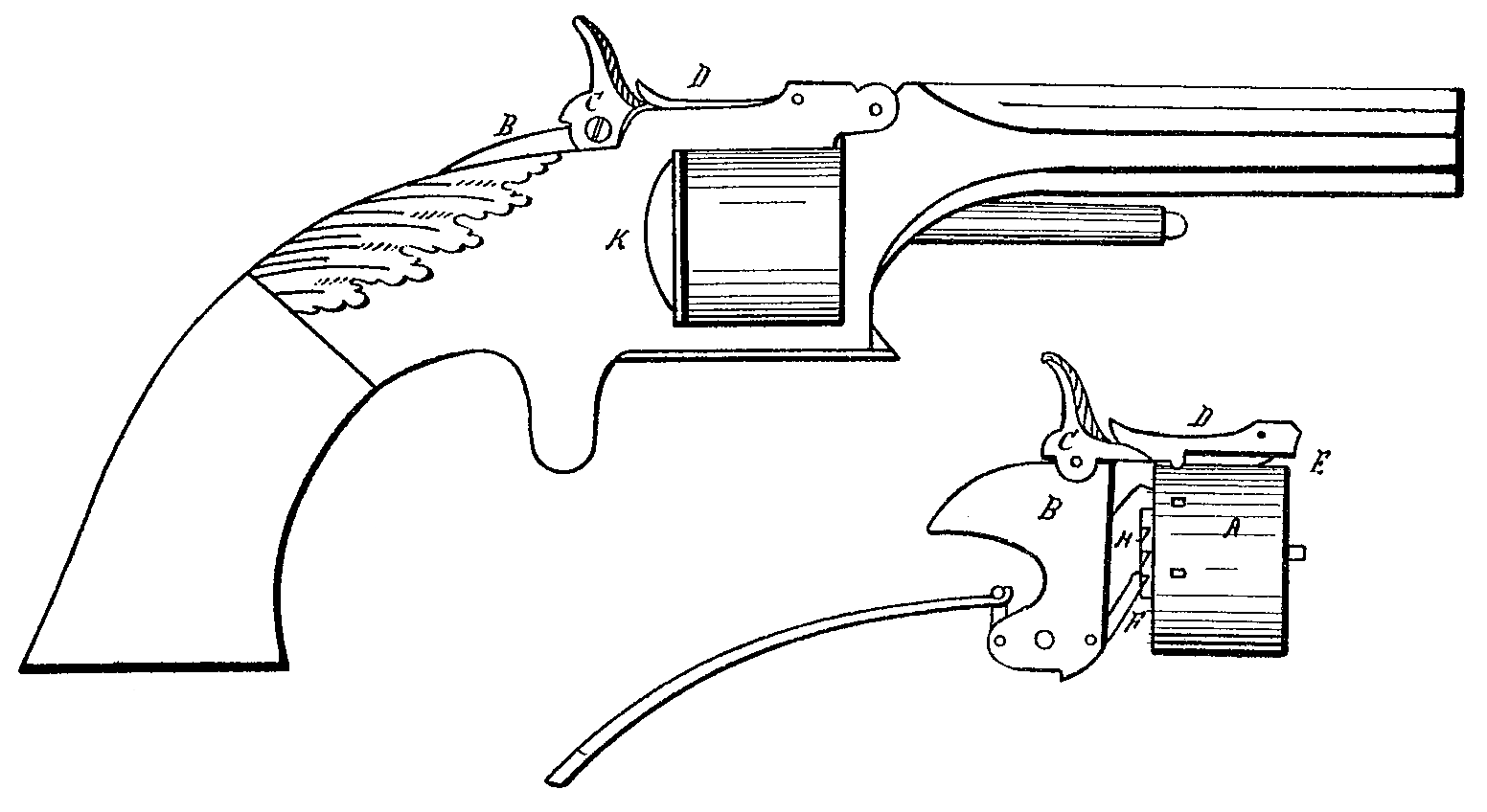US 20607
UNITED STATE PATENT OFFICE.
F. H. HARRINGTON, OF SPRINGFIELD, MASSACEUSETTS, ASSIGNOR TO FORACE SMITH AND DANL. B. WESSON.
IMPROVEMENT IN REVOLVING FIRE-ARMS.
Specification forming part of Letters Patent No. 20,607, dated June 15, 1858.
To all whom it may concern:
Be it known that I, Francis H. Harrington, of Springfield, in the county of Hampden and State of Massachusetts, have invented a new and useful Improvement in the Construction of Revolving Fire-Arms; and I do hereby declare the following to be a full and exact description of the construction and operation of the same, reference being had to the accompanying drawing, and to the letters of reference marked thereon, in which—
A represents the revolving cylinder. B represents the hammer directly attached to the mainspring of the lock. C represents a jointed and movable thumb-piece of the hammer. D represents the strap-bolt, E represents a spring. F represents a dog which acts on the ratchet-wheel H when the hammer is drawn back, causing the cylinder A to move one part of its revolution.
The construction of the arm is substantially as follows: In the top strap which connects the breech and barrel a recess is cut, and into this recess is fitted the stop-bolt D. This bolt is hinged near its forward end, and is of such form that it projects downward through the strap and into a notch in the periphery of the cylinder. This is for the purpose of holding the cylinder firmly at the moment of discharge. The hammer is made in two parts, the thumbpiece L being movable on the main body by a joint, and so formed that in discharging it passes under the end of the stop-bolt without disturbing the hold of that bolt upon the cylinder.
The operation of this improvement is readily understood. In working the pistol the jointed thumb-piece C moves first, and before raising the hammer disengages the catch of the stop-bolt and allows the cylinder to revolve, so that as the hammer is drawn back to its position for firing the cylinder, by the action of the lever F, is carried one step forward in its circle and another chamber is brought in the line of the barrel. The stop-bolt then falls into the notch on the cylinder. The cylinder is firmly held as before.
What I claim as my invention, and desire to secure by Letters Patent, is—
The combination of the stop-bolt D, and the jointed thumb-piece C of the hammer, with the revolving cylinder, substantially in the manner and for the purpose herein specified.
FRANCIS H. HARRINGTON.
Witnesses:
Bradley Hariford,
N. A. Leonard.

